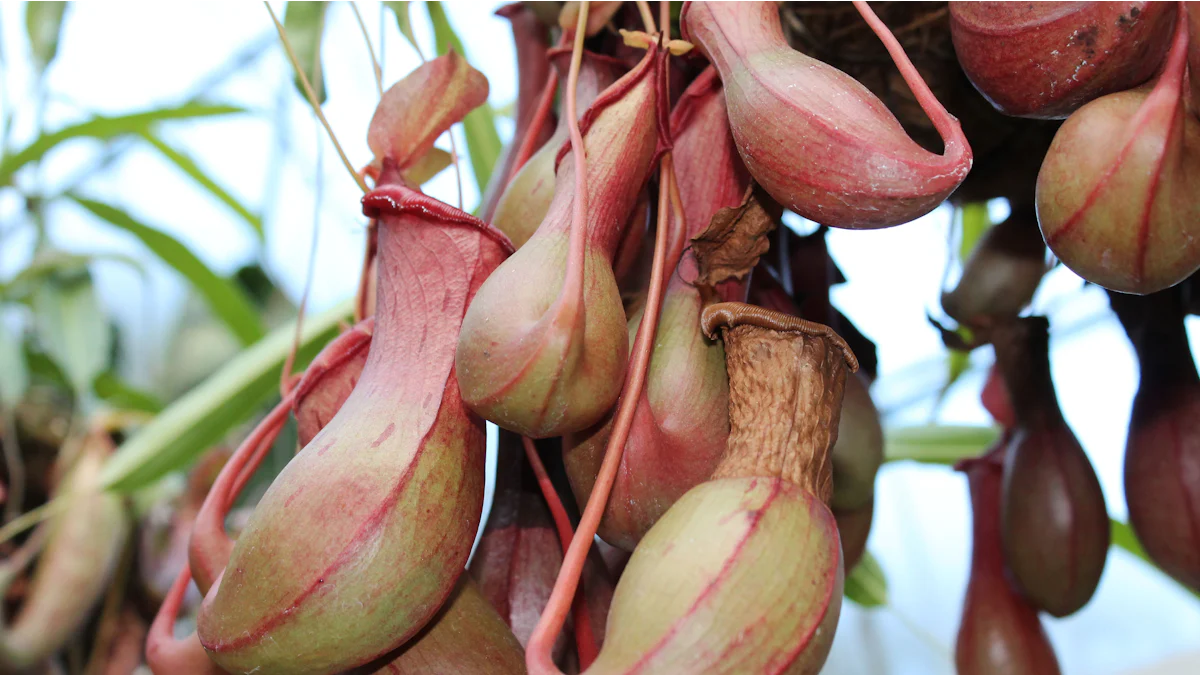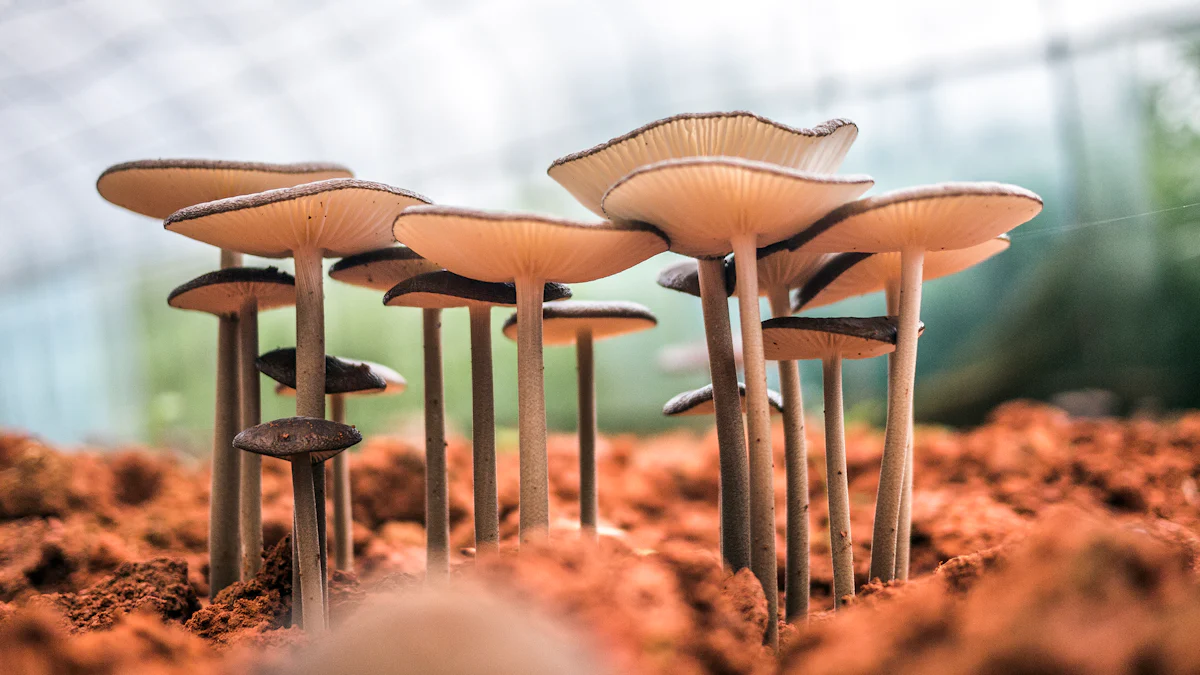Knowledge Encyclopedia: Plants and Fungi

Plants and fungi play a crucial role in ecosystems. Plants generate oxygen and supply food, while fungi decompose organic matter and recycle nutrients. Together, these organisms sustain life on Earth. The diversity of plants and fungi captivates scientists and nature lovers alike. Cacti prosper in deserts, whereas mushrooms thrive in forests. Each species uniquely adapts to its environment. The Knowledge Encyclopedia: Plants and Fungi delves into these marvels. Uncover how plants and fungi mold our world. This exploration through the Knowledge Encyclopedia: Plants and Fungi unveils the complex roles of plants and fungi.
The Importance of Plants and Fungi
Ecosystem Roles
Oxygen Production
Plants produce oxygen through photosynthesis. This process involves converting sunlight into energy. Chlorophyll in leaves absorbs light. Carbon dioxide and water transform into glucose and oxygen. Oxygen then releases into the atmosphere. This essential process supports life on Earth.
Nutrient Cycling
Fungi play a vital role in nutrient cycling. Decomposition breaks down organic matter. Fungi decompose dead plants and animals. Nutrients return to the soil. This enriches the ground for new growth. Mycorrhizal associations enhance nutrient absorption. These partnerships benefit both fungi and plants.
Human Benefits
Food Sources
Plants provide essential food sources. Fruits, vegetables, grains, and nuts nourish humans. Photosynthesis enables plant growth. This process creates the food humans consume. Fungi also contribute to diets. Mushrooms offer nutrients and flavors. Both plants and fungi sustain human life.
Medicinal Uses
Plants and fungi offer medicinal benefits. Many medicines derive from these organisms. Aspirin originates from willow bark. Penicillin comes from mold. Herbal remedies use plant extracts. These natural resources promote health and healing. Scientific research continues to explore new possibilities.
Fascinating Plant Categories

Cacti
Cacti thrive in harsh desert environments. These plants have unique adaptations for survival. Thick, waxy skin reduces water loss. Spines protect against predators and provide shade. Cacti roots spread wide to absorb rain quickly.
Adaptations to Arid Environments
Cacti store water in their stems. This adaptation allows survival during droughts. Photosynthesis occurs at night to minimize water loss. The stomata open when temperatures drop. This process conserves moisture.
Unique Water Storage Methods
Cacti have specialized tissues for water storage. The stem swells after rainfall. This reserve sustains the plant during dry periods. Water storage ensures long-term survival in arid regions.
Carnivorous Plants
Carnivorous plants capture prey for nutrients. These plants thrive in nutrient-poor soils. Unique mechanisms attract and trap insects. This adaptation supplements their diet.
Mechanisms of Prey Capture
Carnivorous plants use various trapping methods. Some have sticky surfaces. Others have snap traps or pitfall traps. These mechanisms ensure successful prey capture. Insects provide essential nutrients.
Nutrient Acquisition
Carnivorous plants digest trapped prey. Enzymes break down the insect's body. Nutrients become available for absorption. This process supports growth in challenging environments.
Trees
Trees play vital roles in ecosystems. These plants provide habitats and resources. Growth patterns and longevity vary among species. Trees contribute significantly to environmental health.
Growth and Longevity
Trees grow through cell division in the cambium layer. This process adds rings annually. Some trees live for centuries. Longevity depends on species and environment.
Importance in Carbon Sequestration
Trees absorb carbon dioxide during photosynthesis. This process helps reduce atmospheric carbon. Carbon sequestration mitigates climate change. Trees play a crucial role in maintaining ecological balance.
Flowers
Pollination Strategies
Flowers use various strategies for pollination. Some flowers rely on wind to carry pollen. Other flowers depend on animals like bees, birds, and bats. These animals transfer pollen from one flower to another. This process ensures the reproduction of plants. Flowers produce nectar to attract pollinators. The sweet liquid serves as a reward for the visiting animals. Pollinators help in the fertilization of flowers.
Some flowers have specific shapes to accommodate certain pollinators. Tubular flowers attract hummingbirds. Flat flowers appeal to butterflies. Night-blooming flowers draw nocturnal creatures like moths. Each flower adapts to its preferred pollinator. This adaptation increases the chances of successful pollination.
Reasons for Colorful Displays
Flowers display vibrant colors for several reasons. Bright colors attract pollinators. Bees see blue and violet hues. Birds prefer red and orange shades. Each color targets a specific group of pollinators. This attraction enhances the likelihood of pollination.
Colorful displays also serve as a warning. Some flowers contain toxins. Bright colors alert potential predators. This warning prevents animals from eating the flowers. The vivid hues protect the plant from harm.
Flowers use colors to communicate with pollinators. Patterns on petals guide insects to the nectar. These patterns act as landing strips. Pollinators follow the visual cues to reach the nectar. This guidance ensures efficient pollination.
Exploring the World of Fungi

Mushrooms
Mushrooms captivate with their diverse forms and functions. Various types and varieties exist, each with unique characteristics. Some mushrooms exhibit vibrant colors, while others blend into their surroundings. Edible mushrooms provide nutrition and flavor to dishes. Poisonous varieties pose risks to those who consume them. Identification skills prove essential for mushroom enthusiasts.
Types and Varieties
Mushroom varieties span a wide spectrum. Button mushrooms appear frequently in grocery stores. Shiitake mushrooms offer a rich, savory taste. Portobello mushrooms serve as a meat substitute in vegetarian dishes. Morel mushrooms entice with their honeycomb appearance. Each variety contributes distinct flavors and textures to culinary creations.
Role in Decomposition
Mushrooms play a crucial role in decomposition. Fungi break down organic matter, recycling nutrients back into the ecosystem. Decomposing leaves and wood enrich the soil. This process supports new plant growth. Fungi contribute significantly to nutrient cycling, ensuring ecosystem health and sustainability.
Symbiotic Relationships
Fungi engage in symbiotic relationships with other organisms. These partnerships benefit both parties involved. Mycorrhizal associations enhance plant nutrient absorption. Lichen partnerships involve fungi and algae living together. Symbiosis showcases the interconnectedness of life on Earth.
Mycorrhizal Associations
Mycorrhizal fungi form associations with plant roots. Fungi extend their hyphae into the soil, increasing nutrient uptake. Plants provide carbohydrates to fungi in return. This mutualistic relationship boosts plant growth and resilience. Mycorrhizal associations play a vital role in forest ecosystems.
Lichen Partnerships
Lichens represent a partnership between fungi and algae. Fungi provide structure and protection. Algae conduct photosynthesis, producing food for both organisms. Lichens thrive in harsh environments, from deserts to arctic tundras. These partnerships demonstrate the adaptability and resilience of life.
Plants and fungi hold an essential place in Earth's ecosystems. These organisms provide oxygen, food, and medicinal resources. Fungi decompose organic matter, recycling nutrients back into the soil. Mycorrhizal fungi enhance plant nutrient uptake through mutualistic symbioses. This partnership boosts plant growth and resilience. Explore the fascinating world of plants and fungi further. Discover the intricate relationships and adaptations that sustain life on Earth. Engage with nature's wonders and expand your understanding of these vital organisms. The journey of learning about plants and fungi never ends.

